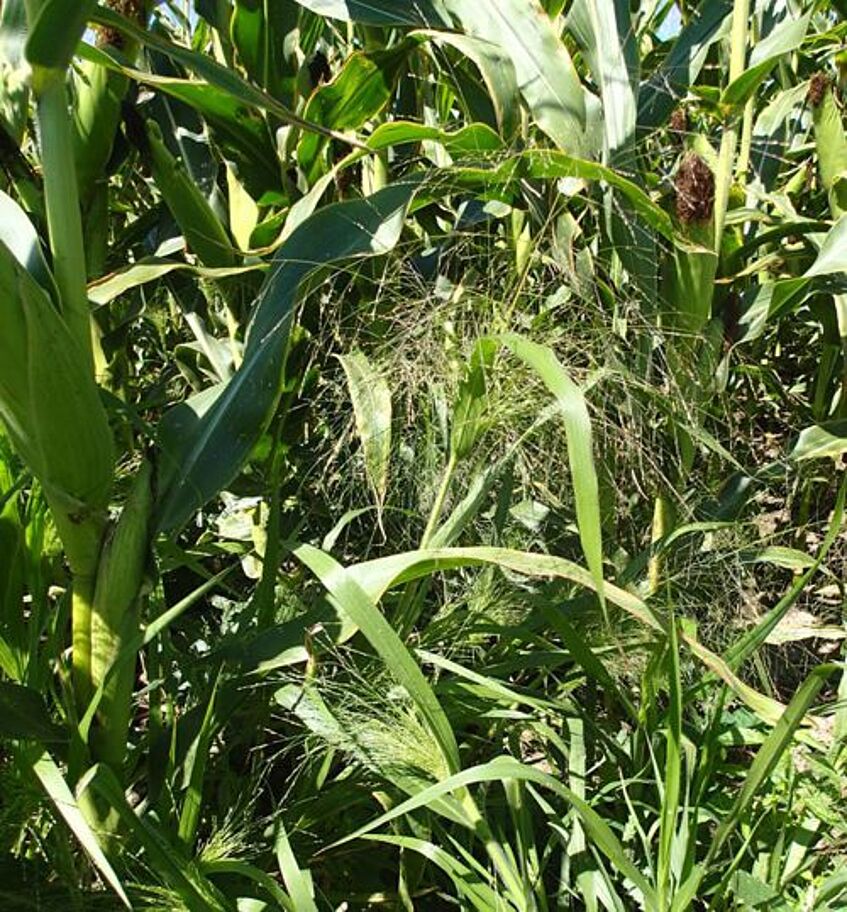DNA barcoding of invasive genera

In disguise, indeed: Panicum barbipulvinatum (photo: C. Pachschwöll)
DNA barcoding of invasive genera
Biological invasions have become a major concern in the past decades. They are believed to be responsible for declining biodiversity worldwide by contributing to local extinctions of native species, causing the breakdown of biogeographical barriers that lead to homogenization of regional species pools and causing enormous socioeconomic damage that have accelerated recently in an era of global change. It is generally accepted that early detection of new alien species is pivotal because lag-phases ("invasion debt") often are substantial, implying that today’s rare but fast spreading aliens may become tomorrow’s noxious weeds. In the last years it has become evident that an increasing number of non?native vascular plants (e.g. water plants or weeds) have become naturalized or even invasive without ever being noticed.
A well suited approach for the early detection of these "invaders in disguise", especially if they do not exhibit the diagnostic features required for determination, is DNA barcoding. In DNA barcoding, an organism's DNA is used to identify it as belonging to a particular species. While most barcoding projects use one (in animals) to a few (in plants) selected marker sequences only, advancements in sequencing technology, i.e. next-generation sequencing (NGS), allows more DNA barcodes per sample to be generated, positively affecting the identification power of DNA barcoding. Apart from metabarcoding in ecology which uses short DNA regions and often degraded DNA, another emerging barcoding approach involving NGS techniques is ultrabarcoding, which uses "genome skimming". Genome skimming is low-coverage (1–10×) shotgun sequencing of genomic DNA on the Illumina, where near-complete assemblies of the high-copy fractions of the genome (plastid genome, mitochondrial genome and nuclear ribosomal DNA cistron) can be obtained. As standard barcode markers (in plants the plastid rbcL, matk, trnH-psbA and the nuclear ITS) and certain specific barcodes are covered as well, this approach is backwards compatible, which means that the NGS-data is compatible and comparable to the barcodes obtained with Sanger-sequencing. Genome skimming as a universal extended barcode has the potential to supersede classical barcoding approaches as the costs for NGS are decreasing, making higher coverages feasible. Even if only (historical) herbarium material is available, complete plastid and rDNA sequences can be recovered with this approach.
In the course of the PhD project of Clemens Pachschwöll which is supervised by Gerald M. Schneeweiss and Franz Essl, we will focus on DNA barcoding of species from the genera Amaranthus and Chenopodium s.l. from the Amaranthaceae and Eragrostis and Panicum from the Poaceae to gain information about cryptic alien species (invaders in disguise) in Austria. For that purpose, about 400 accessions will be sequenced. A focus will lie on unclear, undeterminable Austrian specimens using unambiguous accessions as a reference. These genera are – with the exception of some new invaders in Panicum – among the most commonly represented genera in the alien flora of Austria and Europe. They possess the C4 photosynthesis pathway and have particular invasion potential under an increasingly warmer climate.
For a selected number of alien species (those with sufficient amount of distribution records), the (Austrian) invasion histories and dynamics will be inferred using species distribution modeling.
In this associated project of ABOL (The Austrian Barcode of Life), it will be tested (i) if invaders in disguise can be detected with modern DNA (ultra)barcoding techniques, (ii) if DNA (ultra)barcoding can help quantifying invasion debts of potentially invasive species in Austria; and (iii) if traditional alpha taxonomy in combination with DNA (ultra)barcoding can improve accuracy of species identification and further refine taxonomic classification of cryptic invasive plant species. This project is expected to be of relevance in developing management and monitoring strategies for invasive alien plants in agriculture, nature conservation and beyond.
